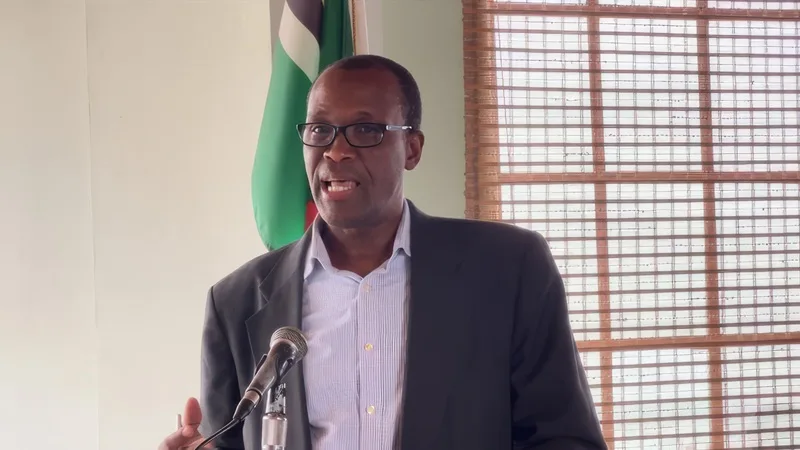Primary Health Care (PHC) model of Dominica

The Primary Health Care (PHC) model of Dominica has been the backbone of the country’s health system since the early 1980s. Rooted in the global principles of the Alma-Ata Declaration (1978), which defined health as a fundamental human right, Dominica reorganised its health services to ensure accessibility, equity, and a preventive focus across all communities, from the capital city of Roseau to remote mountain villages in the interior and coastal regions.
Historical Development
The PHC approach was formally adopted in Dominica during the early post-independence period, when the government recognized the need to move from a centralized hospital-focused system toward a community-based model. In the 1980s, Dominica established a district health system, dividing the island into seven health districts. Each district became responsible for delivering essential services to its population through a network of hospitals, health centers, and outreach programs.
This structure allowed Dominica to align with World Health Organization (WHO) and Pan American Health Organization (PAHO) recommendations, and the model soon became recognized as one of the most effective in the Caribbean region.
Structure of the PHC System
Dominica’s PHC system is organized into seven health districts, each anchored by a district hospital and several health centers. The hospitals provide secondary care and referrals to the national referral hospital, while health centers deliver preventive and primary services.
Community Health Centers
More than 50 health centers and clinics operate under the PHC model. These facilities bring services directly into villages, ensuring even small, rural populations have access to care. Examples include:
- Calibishie Health Centre, serving fishing and tourism communities in the north.
- Grand Bay Health Centre, catering to farming and coastal families in the south.
- La Plaine Health Centre, located in the southeast, addressing needs of remote agricultural populations.
- Salybia Health Centre, serving residents of the Kalinago Territory, where cultural traditions influence health-seeking behaviors.
Health Teams
Each district health team includes a district medical officer, nurses, community health aides, and environmental health officers. These teams are responsible not only for treating illness but also for education and preventive outreach, such as home visits, vaccination campaigns, and school health checks.
Services Provided
The PHC model ensures wide coverage of:
- Maternal and child health services – antenatal care, skilled deliveries, and neonatal care.
- Immunization programs – high coverage against childhood diseases.
- Management of non-communicable diseases (NCDs) – hypertension, diabetes, and cancer screening.
- Environmental health – sanitation, water quality testing, and food safety inspections.
- Health education – promoting wellness, nutrition, and healthy lifestyles.
Achievements of the PHC Model
The PHC model transformed Dominica’s health outcomes:
- Infant mortality dropped from more than 20 per 1,000 live births in the 1970s to under 12 by the early 2000s.
- Skilled birth attendance reached close to 100%, reducing maternal and neonatal deaths.
- Life expectancy steadily increased, reaching about 74 years by 2023.
- Universal access to basic health services was achieved, even in isolated communities such as Delices or formerly Petite Savanne.
International agencies, including PAHO and the OECS, often cited Dominica’s PHC system as a model for other small island developing states.
Challenges
Despite successes, the PHC model faces mounting pressures:
- Brain drain of nurses and doctors, with many leaving for the UK, USA, and Canada.
- Rising NCDs, such as diabetes and hypertension, which now account for a majority of deaths.
- Natural disasters, particularly Hurricane Maria (2017), which damaged or destroyed many health centers.
- Resource limitations, including shortages of medicines and diagnostic equipment.
- Geographic barriers, with some mountainous or coastal communities still struggling with access to secondary and specialist care.
Adaptation and Reform
In response, Dominica has sought to modernize and strengthen its PHC framework:
- Climate-resilient infrastructure: New health facilities, such as the Dominica China Friendship Hospital and rebuilt district centers, are designed to withstand hurricanes.
- Digital health tools: Introduction of electronic immunization registries and telemedicine pilots to extend services to remote populations.
- Partnerships: Support from Cuba through the Cuban Medical Brigade, China through medical teams and infrastructure, and PAHO/WHO for technical cooperation.
- Community-based programs: NGOs like the Dominica Diabetes Association and the Dominica Cancer Society support education and screenings within the PHC model.
Path Forward
The Primary Health Care model of Dominica remains the foundation of the health sector. Future reforms focus on:
- Expanding telemedicine and digital health integration.
- Increasing training and retention of nurses and doctors.
- Addressing the rising tide of NCDs with stronger wellness campaigns.
- Ensuring every health facility is climate-resilient and disaster-ready.
- Deepening community participation to keep health services culturally relevant and accessible.
By continuing to evolve, the PHC framework will remain central to Dominica’s efforts to achieve universal health coverage and support the government’s vision of becoming the first climate-resilient nation in the world.




